That the score of Don composed four decades ago can set Gen-now grooving, as adapted in the modern Don, is sufficient proof of their timelessness. While his partner in rhythm, older brother Kalyandji passed away almost a decade ago, Anandji feels his presence all the time. “I miss him dearly whenever I’m honoured with awards. After all, we worked together,” he says the emotion evident in his eyes. “I am emotional, I cry easily. All comedians in the world are emotional. Bob Hope, Mehmood, IS Johar, Kishore Kumar... all,” says Anandji who was also loved for his mimicry.
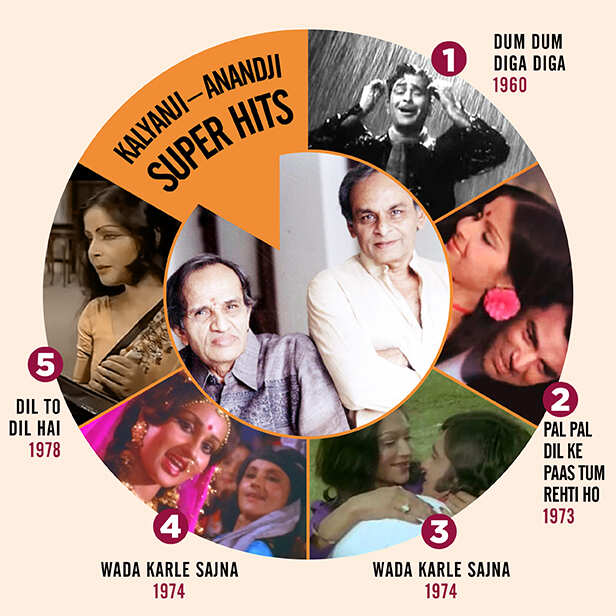
Known as Bade Miyan and Chote Miyan, composers Kayandji-Anandji, between the ’60s-’80s, had many firsts to their credit. They were the first to use the clavioline to play the nagin been. First to acquaint the industry with rap with Tumko humpe pyaar aaya (Jab Jab Phool Khile). First to organise music shows. First to bring in the azaan in a Hindi film (Himalaya Se Ooncha). First to work with many first time directors, singers and lyricists.... Also, their genius lay in their magnificent variety, from the folk-based music of Saraswatichandra to the funky beats in a Feroz Khan film. “We’re sons of a trader, humko har maal rakhna padhta tha,” says the 80 plus Anandji in businessman parlance. Long retired, Anandji today has involved himself in several social causes – one of them being the Saulabh Sauchalaya in Mumbai, which run on the ‘pay and piss’ scheme. Yet his poetic side is flagrant when he laments the degeneration in music today. “Agar aatma ka nichor nahin (if there’s no soul), then there’s no beauty in music!”
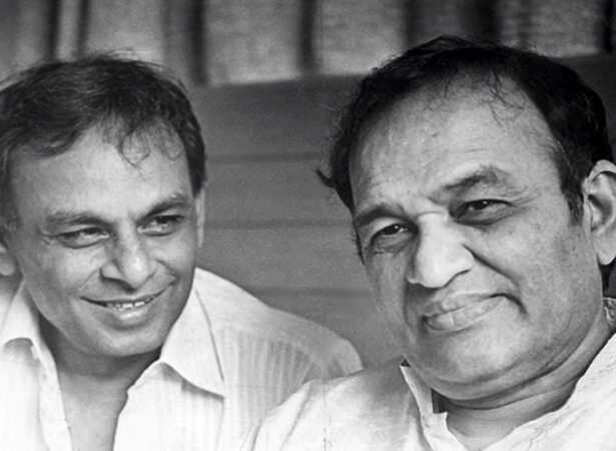
SHOW TIME
Brought up in old world Girgaum, Anandji recalls that he grew up in an atmosphere rich in culture, stalwarts like V Shantaram and Durga Khote being their neighbours. His introduction to the world of music happened when an 11-year-old Anandji and his classmates was taken to be part of the chorus in Devika Rani’s Meghdoot (1944). Meanwhile, because Kalyanji was a good student their community funded his stay in a boarding at King Circle. “There he played the violin and the guitar. He even made a musical instrument from stone,” recalls Anandji about his older brother by five years. “We’d also participate in the Sarvajanik Utsav, Navratri and Ganpati celebrations. I’d play the tabla – though my mother disapproved of my playing an instrument made from gai ka chamda (cow leather)!” Anandji confides, “While I remained short, Kalyanji grew tall and handsome. I told him he should become a hero. He refused saying he wanted to be a musician. So we started an orchestral group called Kalyanji Virji and Party and held musical shows. We were the pioneers in such shows.” Soon, Kalyanji got a new electronic instrument called the clavioline from abroad. “With this instrument we played the been (the music to entice snakes) for a snake sequence in Nag Panchami (1953), the music of which was scored by Chitragupt. People came to watch the film just to listen to this music,” he earmarks their debut in film music.
THE SNAKE CHARMERS
The duo was asked to play the been once again in the Hemant Kumar composed film Nagin (1954). The hit numbers featured in the Binaca Geet Mala with Man dole mera tan dole being a chartbuster. “Soon our nagin tune was being played in mandirs, navratri and even shaadis,” he beams. The duo then went on to compose songs for films Samrat Chandragupta (1958, Chahe paas ho), Post Box 999 (1956 – Naina hai jadoo bhare) and Dil Bhi Tera Hum Bhi Tere (1960 - Mujhko is raat ki tanhai). “Though we worked together the credits had the name Kalyanji Virjee Shah. Producer Subhash Desai, who was introducing his brother Manmohan Desai in Chalia (1961), suggested that just as Raj Kapoor had Shankar-Jaikishen he’d introduce us two as Kalyanji-Anandji. People actually believed that our composed Chalia mera naam filmed on Raj Kapoor was composed by Shankar Jaikishen, so tuned in it was to Raj Kapoor’s image.” Subsequently, Himalay Ki God Mein and Jab Jab Phool Khile both in 1965 further strengthened their position.

NATIONAL AWARD
It was the music of Saraswatichandra (1968) that endorsed the genius of the brothers, more so because the classical tunes came soon after their modern rhapsody in Haseena Man Jayegi. Also, the Govind Saraiya film, an adaptation of the similarly titled Gujarati novel by Govardhanram Madhavram Tripathi, was a challenge. “It was a white and black film in the era of colour. It had a new hero - Manish. We had to include the pre-Independence tempo and mood in the music.” Fearing that the film wouldn’t run, the composers tried to popularise the songs much before the release. Chandan sa badan, Phool tumhe bheja hai, Chod de sari duniya, Hamne apna sab kuch khoya... were instant hits.” Though they were raag-based the bhaav (emotional) was more important. When we heard that we had won the National Award, I said to myself, “Ulloo ke patthe (you fool) you thought the film wouldn’t run!” jests Anandji.
BHARAT KI KHOJ
The brothers enjoyed a special relationship with their directors and were known to contribute to the lyrics/ picturisation of the songs. “In Manoj Kumar’s Upkar (1967), the song Kasme vaade was to appear before the interval. We feared the audiences would get bored and run away half way through the film more so because it was to be filmed on Pran, a ‘hated villain’,” says Anandji of Pran’s career-defining song. “But when we attended the premiere in Delhi, the audience began clapping hard on the song. Overwhelmed, I touched Manojji’s feet. I’d never imagined that the song would create such an effect!” Manoj Kumar’s Purab Aur Pashcim (1970) was again a test because it traversed the pre-Independence and the post-Independence spectrum, the East and the West. “Koi jab tumhara was filmed in London. The hero’s an Indian so the rabab was used to make it soulful.”
Back then it created quite a hullabaloo when Manoj Kumar, after signing Kalyanji-Anandji dropped his old faithfuls to rope in their ex-assistants Laxmikant-Pyarelal for Roti Kapda Aur Makan. “We didn’t mind that. Also when you’re the hero, director, producer and writer of your films, you have to change something to lend newness to your project. So Manojji changed the music director. What’s the harm?”
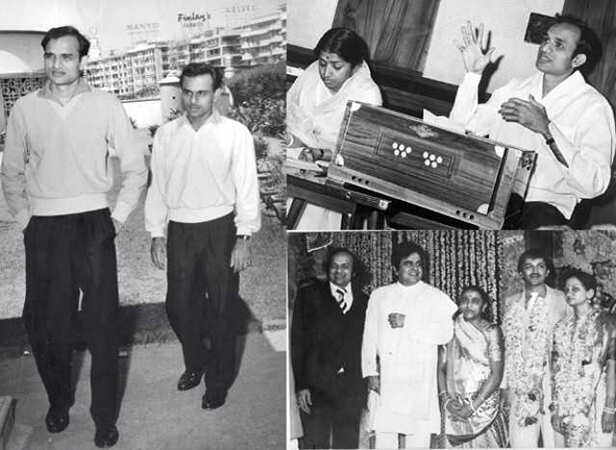
DIRECTORS’ MEN
From composing desi beats for Manoj Kumar the duo hit a contrasting octave when they composed for the ‘Texas cowboy’ Feroz Khan in films right from Apradh, Dharmatma, Qurbani and Jaanbaz till the ’80s. “Ferozji liked a Western and Arabian touch in his songs. He was keen to try new singers. He never bothered about money, he didn’t mind how much more time was taken to dub a song.”
Anandji goes on to share his bond with Prakash Mehra. “I enjoyed astrology and face reading. So whenever Prakash Mehra, during his struggling days, complained of shortage of money, I’d reassure him saying ‘you’ve got thick earlobes, one day you’ll roam around in cars’.” He shares further, “If Dilip saab (Kumar) was to be convinced about something he’d be told that Anandji has suggested that particular act (the duo composed for Dilip’s Gopi and Vidhata). Dilip saab would then say, ‘Ab Chote miyan ne bol diya toh kar lenge!’
Anandji dubs Rajesh Khanna as ‘our boy’. “Kaka lived in the same building as ours in Girgaum. He belonged to an affluent family and was adopted by his chacha and chachi. He moved around in an open MG car even before he became a star. We composed for his debut Raaz (Akele hai chale aao) in 1967. We also shared a good relationship with Amitabh Bachchan. Before we’d begin our shows with him, he’d always first touch my wife’s (Kanta) feet.”
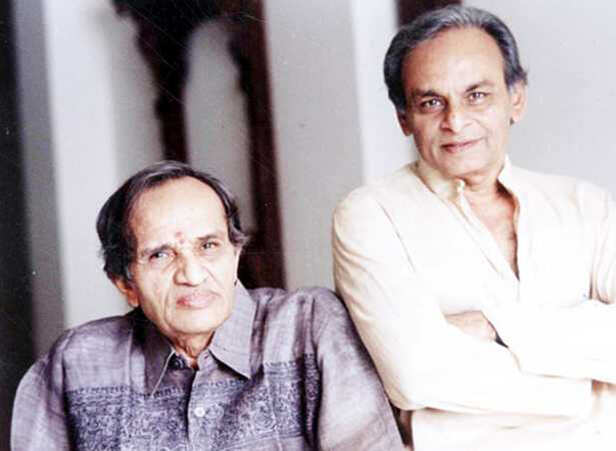
LUCKY WE
In a superstitious industry, Kalyanji-Anandji were dubbed ‘lucky’ for first-timers. They worked with debutant directors including Manmohan Desai (Chalia), Prakash Mehra (Hasina Maan Jayegi), Manoj Kumar (Upkar), Sultan Ahmed (Heera,), Feroz Khan (Apradh), Subhash Ghai (Kalicharan) and Chandra Barot (Don, 1978). They also played mentors to singers like Kumar Sanu, Alka Yagnik, Sadhna Sargam, Sapna Mukherjee and Sunidhi Chauhan. “We gave the name Kumar Sanu to Kedranath Bhattachraya and Sadhana Sargam to Sadhna Ganekar. Our protégés were respected outside, there would be no ched khani (teasing) with them,” says Anandji who also had no qualms working with new lyricists like Gulshan Bawra (of Zanjeer fame) or MG Hashmat (Kora Kagaz, 1975). Anandji rubbishes the rumours about Lata Mangeshkar and Asha Bhosle’s monopoly. “What the producer wanted, what the actress wanted would be considered. Even if there were two actresses in a film, there were times both the songs would be recorded by Lataji. It was commercially viable for the producer and the record company that the song be sung by either Lata or Asha. So why blame them?”
INSPIRATION & EMOTIONS
Interestingly, Kora Kagaz was the only film for which they won the Filmfare Award. “Vijay Anand, the hero, had this thing about looking chikna. But we insisted that he looked like Michael Caine and that wearing spectacles would add to his character.” He continues, “Interestingly, the title song Mera jeevan kora kagaz is sung in a male voice (Kishore Kumar) but filmed on a female character (Jaya Bhaduri). When we were recording the song, Kishoreda said that the song should include a positive para too. He joked, ‘Kolyonji-Anondji better add that antara now. If you call me to sing it again you’ll have to pay me again’. Being under great duress, I somehow suggested the lines,
“Dukh ke andar
Sukh ki jyoti
Dukh hi sukh kya gaan
Dard sehkar janam leta har koi insaan...”
Anandji recalls another real life incident that helped him compose a masterpiece. “My elder daughter Rita, who lives in London, called us there for her delivery. I declined saying that I was too tied up here. She retorted, “Does a daughter lose all rights over her parents once she’s married?” Soon after this I had to record the bidaai song Babul ka yeh ghar behna for Daata (1989). When it was being recorded the atmosphere became emotionally charged. Alka (Yagnik), who was soon to get married, was in tears, Kishoreda cried, the chorus singers also wept, I broke down too. We retained the first take, because we would have never got that emotion again.”
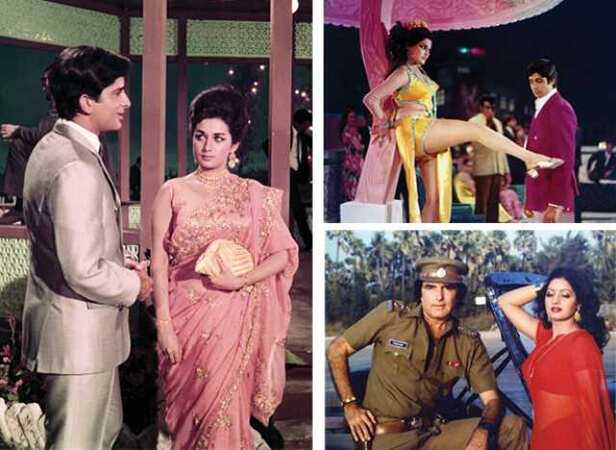
BHAI BHAI
Anandji denies any ego clash with his brother. “My dad had warned me about ego problems creeping in. He said, ‘Kalyanji’s better looking. His pictures will be printed more. You shouldn’t feel offended’. I replied I wouldn’t. But he said ‘your wife will mind’. I said that wouldn’t happen too. I reassured him saying ek suraj banega, ek chand!” Their younger brother Babla, who also worked with them was an expert in western rhythms. “He travelled to Africa and the West Indies for shows. He introduced the rotodrums (Laila main Laila in Qurbani) the congo and other Latin beats in film music. While Kalyanji introduced the electronic synthesiser, I relied more on folk music. Also Kalyanji had great sense of story, song picturisation and editing. I was good in mimicry. Initially, Kalyanji was shy on stage. Later he opened up; his witty one-liners were a rage.”
LEWD LYRICS
Like most, Anandji condemns the vulgarisation of lyrics today. “Earlier music had navras (nine sentiments). Today there’s only bibast ras (vulgar). We also composed item numbers like Mere angnein mein (Laawaris, 1981) and Saat saheliyan (Vidhaata, 1982) but it was a one-off thing. Earlier, even the word chaliya (cheat) used in the title song of Chaliya was disapproved by the Censor Board. We had to remove the phrase ‘chalna mera kaam’ and replace it with ‘chaliya mere naam’ even after the reels were ready. If you listen carefully the song in the film goes Chaliya mera naam, chaliya mera naam. Today, technology has come in but the soul is lost, anubhuti has gone,” he says. About AR Rahman winning the Oscar for Slumdog Millionaire, he says, “I’d have been happier if he had got it for Lagaan instead because that was an Indian entry. He has done better work in Lagaan. Rahman is an excellent technician. We’re happy that he has reached so far.”

SUNSET…
Almost 10 years before Kalyanji passed away (November 3, 2000), the duo had quit the music scene. “Soon after Tridev (1989) and after his son and my nephew Viju Shah had begun making a name for himself, Kalyanji said, ‘Ham ab yeh dukaan bandh karte hai. Let the children work instead, times are changing’. After having done more than 250 films, there was nothing left for us to do. We retired at our peak and diverted towards social work. Like my dad would say, “Learn from nature! When the shadows grow very long it’s sunset time.”
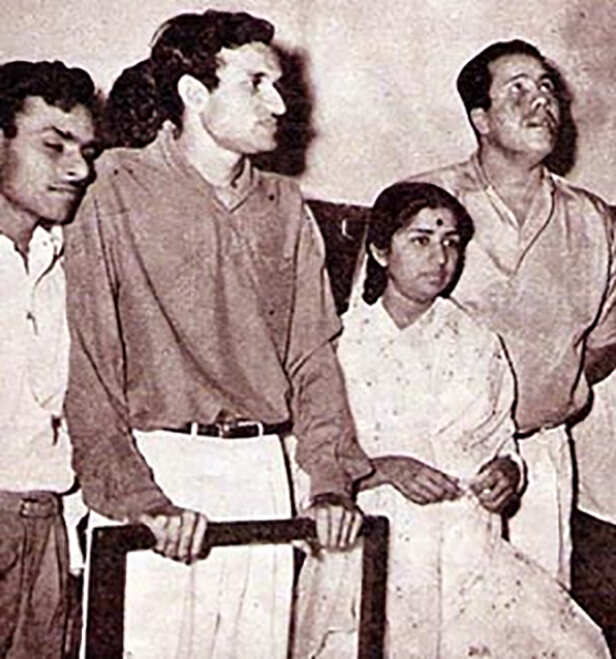
MEMORIES AND MUSIC
Darpan ko dekha (Upasana, 1971):
I was in Nairobi at the Thika waterfalls, when I saw a blind man enjoying the sound of the waters. But he couldn’t help lament, ‘I wish I could see it!’ Darpan ko dekha was inspired by this incident.
Zindagi ka safar (Safar, 1970)
Zindagi ka safar is an introspective song. So we asked Kishoreda to keep a distance from the mike and sing. He sang it so beautifully that I pulled his cheeks in appreciation (something which he’d always do)!
O saathi re (Muqaddar Ka Sikander, 1978)
A dear friend had just passed away. His relatives, who were first concerned about saving him, immediately began discussing the last rites. This was the trigger to the song O saathi re tere bina bhi kya jeena. What is life without breath?
Darpan ko dekha (Upasana, 1971):
I was in Nairobi at the Thika waterfalls, when I saw a blind man enjoying the sound of the waters. But he couldn’t help lament, ‘I wish I could see it!’ Darpan ko dekha was inspired by this incident.
Zindagi ka safar (Safar, 1970)
Zindagi ka safar is an introspective song. So we asked Kishoreda to keep a distance from the mike and sing. He sang it so beautifully that I pulled his cheeks in appreciation (something which he’d always do)!
O saathi re (Muqaddar Ka Sikander, 1978)
A dear friend had just passed away. His relatives, who were first concerned about saving him, immediately began discussing the last rites. This was the trigger to the song O saathi re tere bina bhi kya jeena. What is life without breath?
Next Story